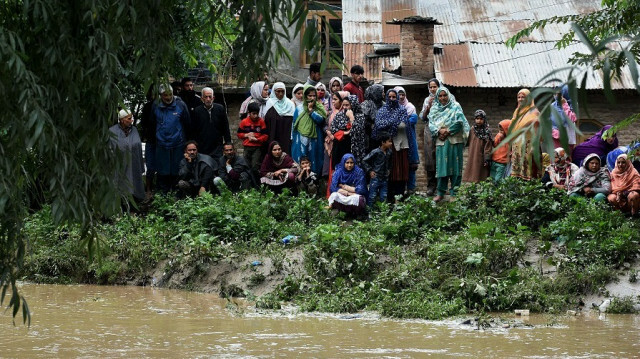
Authorities issue advisory after region’s largest river breaches danger mark
Authorities in Indian-administered Kashmir sounded a flood alarm in the capital Srinagar after the region’s largest river breached the danger mark.
The warning comes with advice to people living near large water bodies to remain vigilant, while locals have been cautioned against venturing near uphill streams that are susceptible to flash floods.
Three days of incessant rains led to the overflowing of the River Jhelum and its tributaries. Several low-lying areas of Srinagar were inundated.
The unrelenting rains, which stopped only in the afternoon, led the government to close all schools up to grade 10 for the day. At 15 degrees Celsius (41 degrees Fahrenheit), Tuesday was the coldest recorded June day since 1975, according to the weather department. This temperature is usually experienced in February in Kashmir.
In the Bemina area, women were seen crying as they watched water from an overflowing stream enter houses and wash away household goods, the images reminiscent of a devastating flood in 2014 that submerged nearly the entire city for more than a fortnight and caused damages worth millions of dollars.
The region’s Irrigation and Flood Control Department said the continued rainfall has caused landslides and flash floods at several “vulnerable places, mainly in hilly areas.”
The department advised people to travel on the two key highways only after confirming the status of traffic from the authorities concerned.
Landslides along these highways caused by rainfall often lead to their closure for hours, denying people the only road link to the outside world.
The weather is expected to improve from Thursday and the flood threat is also likely to recede.
Reckless urbanization has led to the blocking of traditional water channels in the region, while the construction of residential houses in low-lying agricultural areas has increased the flood threat.
The 2014 flood was blamed on these unplanned constructions and an unprecedented water buildup in hilly streams caused by unseasonal rainfall for several days in the month of September.
Hello, the comments you share on our site are a valuable resource for other users. Please respect other users and different opinions. Do not use rude, offensive, derogatory, or discriminatory language.
The floor is all yours.








